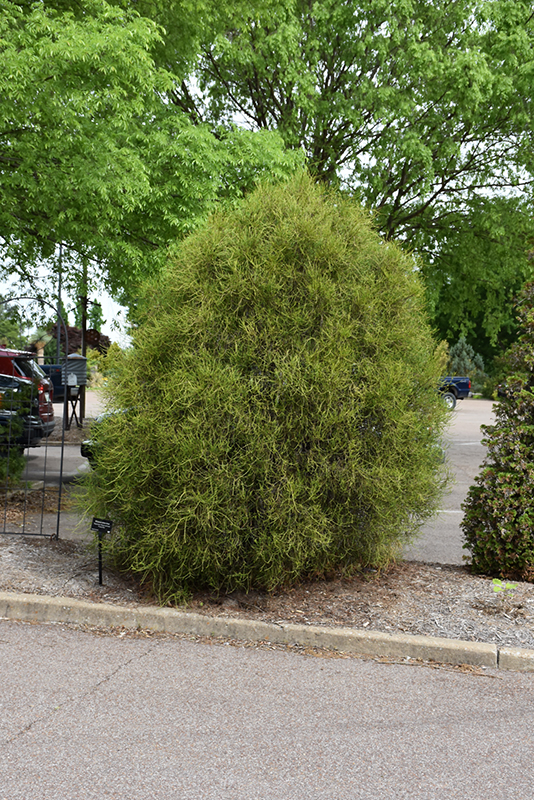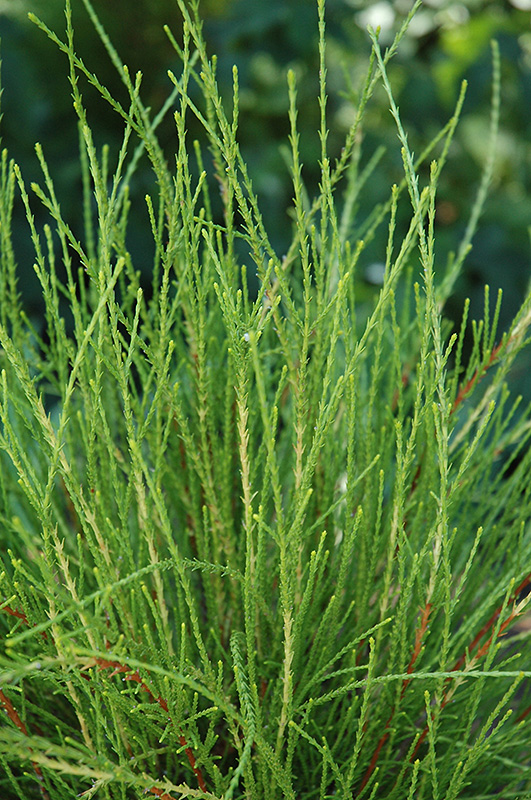Franky Boy Arborvitae
Thuja orientalis 'Franky Boy'
Height: 4 feet
Spread: 3 feet
Sunlight:
![]()
![]()
Hardiness Zone: 4b
Other Names: Platycladus orientalis
Description:
This exquisite variety produces threadlike branches with tiny scale like leaves that are bright yellow-green; puts on a dramatic winter show when the outer edges of the plant turn a rusty bronze color; makes a great garden accent or low hedge
Ornamental Features
Franky Boy Arborvitae is a dwarf conifer which is primarily valued in the landscape or garden for its decidedly oval form. It has chartreuse evergreen foliage which emerges yellow in spring. The threadlike sprays of foliage turn coppery-bronze in the fall, which persists throughout the winter. The shaggy antique red bark adds an interesting dimension to the landscape.
Landscape Attributes
Franky Boy Arborvitae is a dense multi-stemmed evergreen shrub with a shapely oval form. Its relatively fine texture sets it apart from other landscape plants with less refined foliage.
This is a relatively low maintenance shrub. When pruning is necessary, it is recommended to only trim back the new growth of the current season, other than to remove any dieback. It has no significant negative characteristics.
Franky Boy Arborvitae is recommended for the following landscape applications;
- Accent
- Mass Planting
- Hedges/Screening
- General Garden Use
Planting & Growing
Franky Boy Arborvitae will grow to be about 4 feet tall at maturity, with a spread of 3 feet. It has a low canopy. It grows at a slow rate, and under ideal conditions can be expected to live for 70 years or more.
This shrub does best in full sun to partial shade. It is very adaptable to both dry and moist locations, and should do just fine under average home landscape conditions. It is not particular as to soil type or pH. It is somewhat tolerant of urban pollution, and will benefit from being planted in a relatively sheltered location. This is a selected variety of a species not originally from North America.
This tool is an online resource representing many of the varieties that we carry over the course of the season, and is intended for informational purposes only. Inventory varies seasonally, so we cannot guarantee that every plant will be in stock at all times - please contact the store directly for current availability. It does not include our entire selection of plants, so be sure to visit our store to see varieties that may not be represented on this list.

